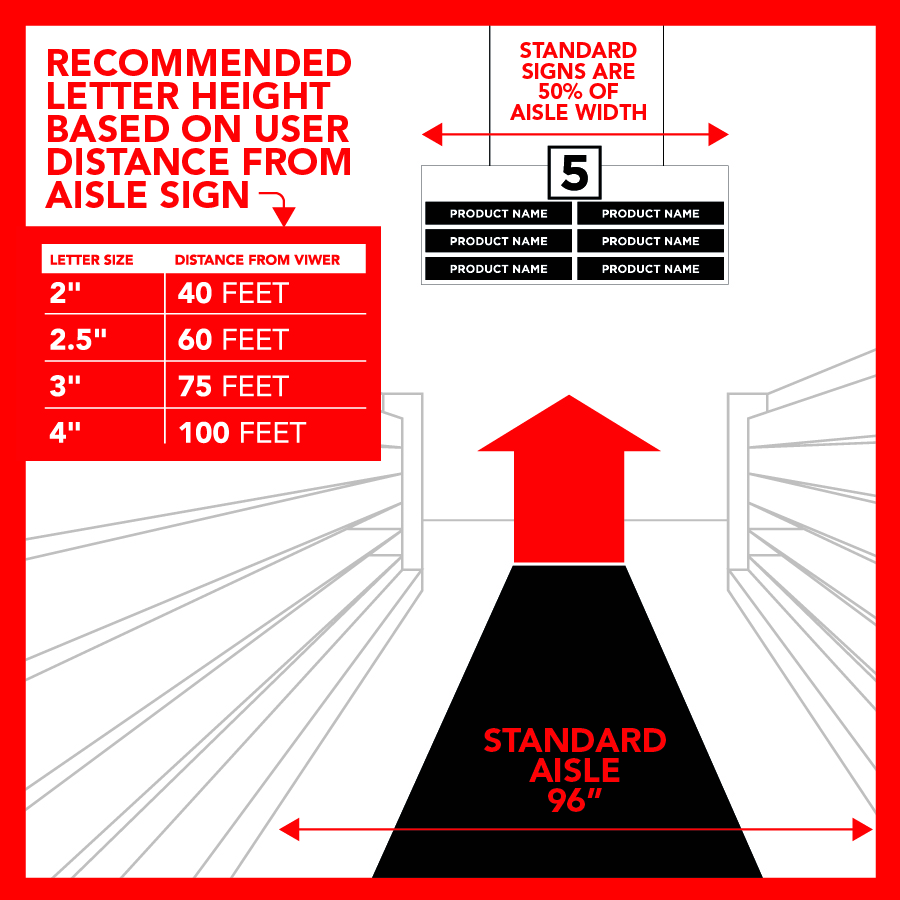
Effective interior hanging signs can significantly enhance customer navigation in retail stores, supermarkets, and commercial spaces. Strategically placed aisle signs suspended from the ceiling above each aisle help guide customers to specific sections and products.
These signs, crucial for effective navigation, must be positioned with readability in mind. Readability distance refers to the maximum distance at which a customer can easily read the sign without straining their eyes. Optimizing this distance improves the shopping experience by making it easier for customers to find what they need.
To ensure clear visibility and readability, consider potential obstructions such as:
- Overhead fixtures (lights, ceiling fans)
- Low-hanging objects (banners, decorations)
- Shelving and merchandise
- Aisle clutter (stocked products, display stands)
- Competing advertising displays
- High ceilings
- Security cameras and their field of view
- Ladder height for sign maintenance
By addressing these factors, retailers can enhance the effectiveness of their hanging signs and improve overall customer satisfaction.

